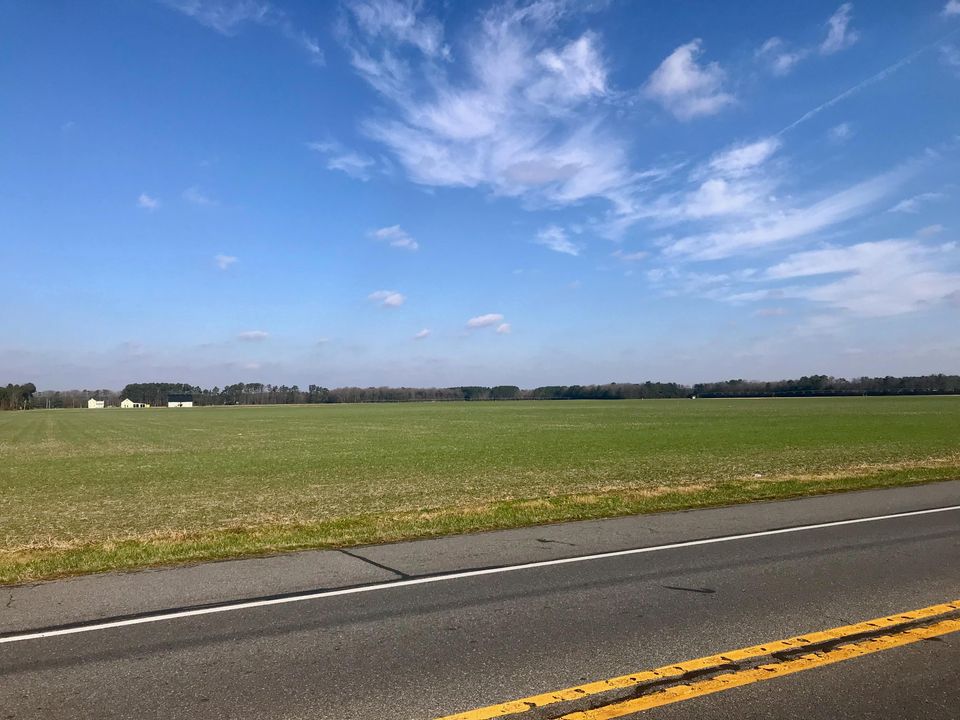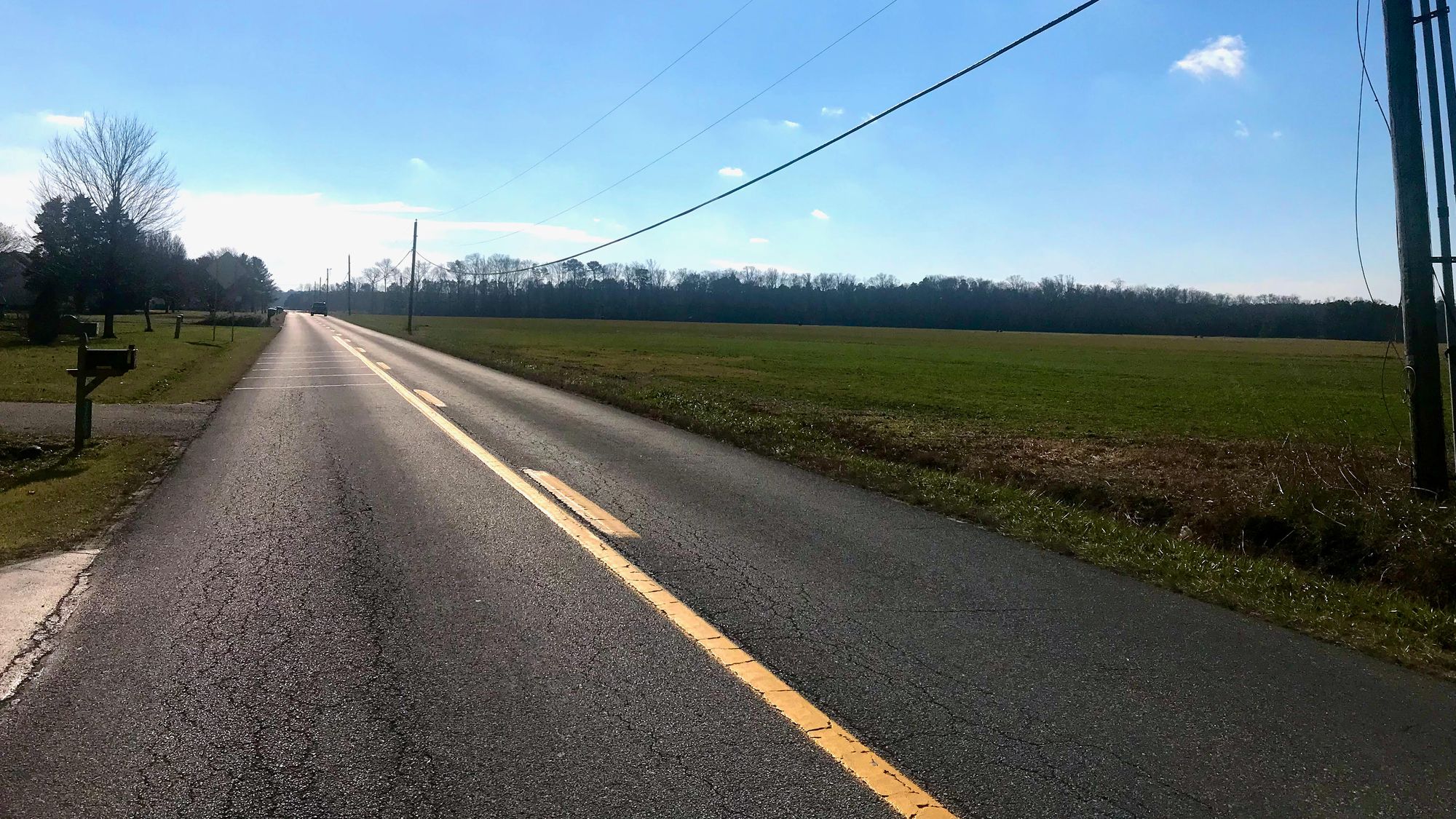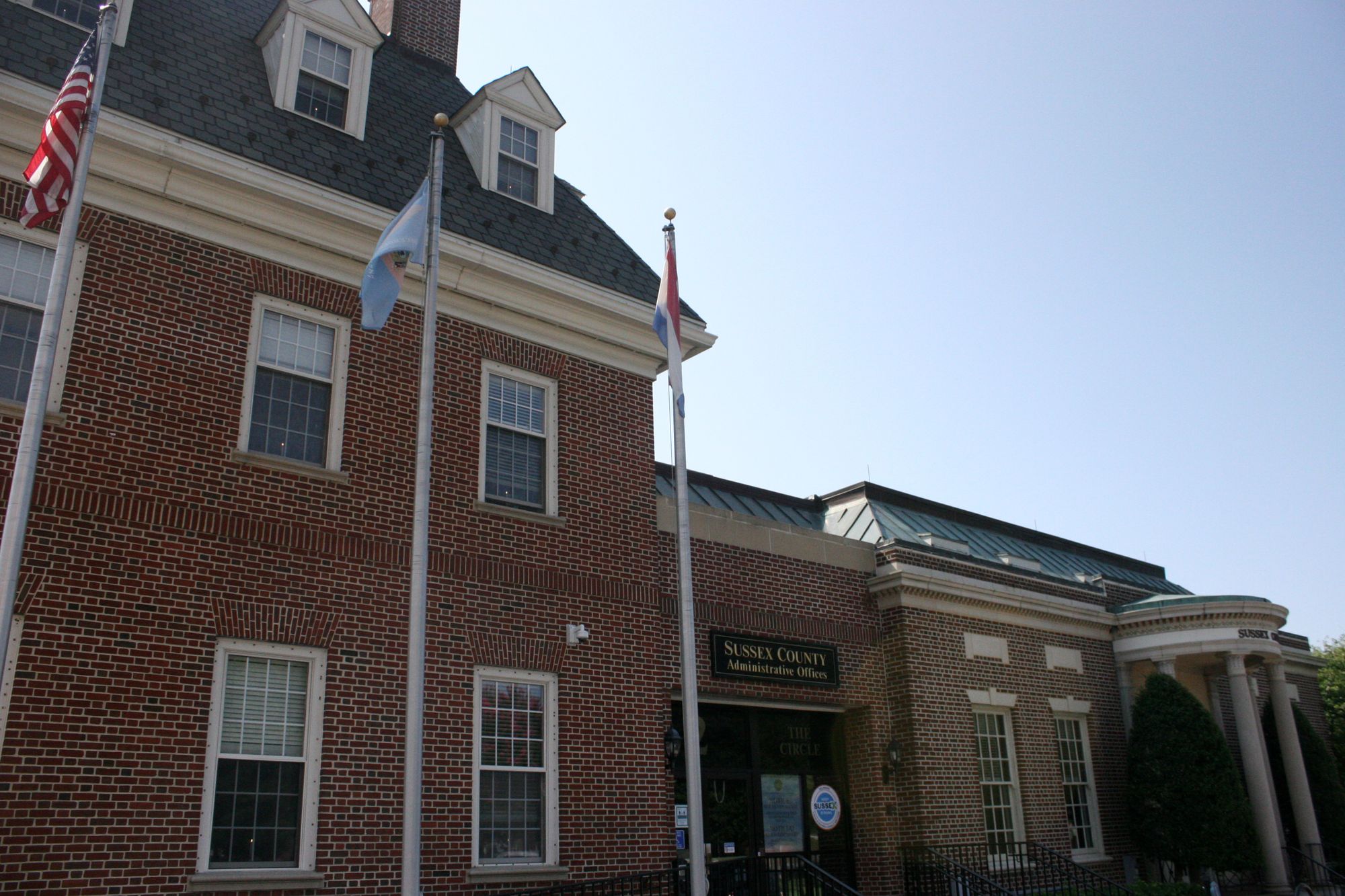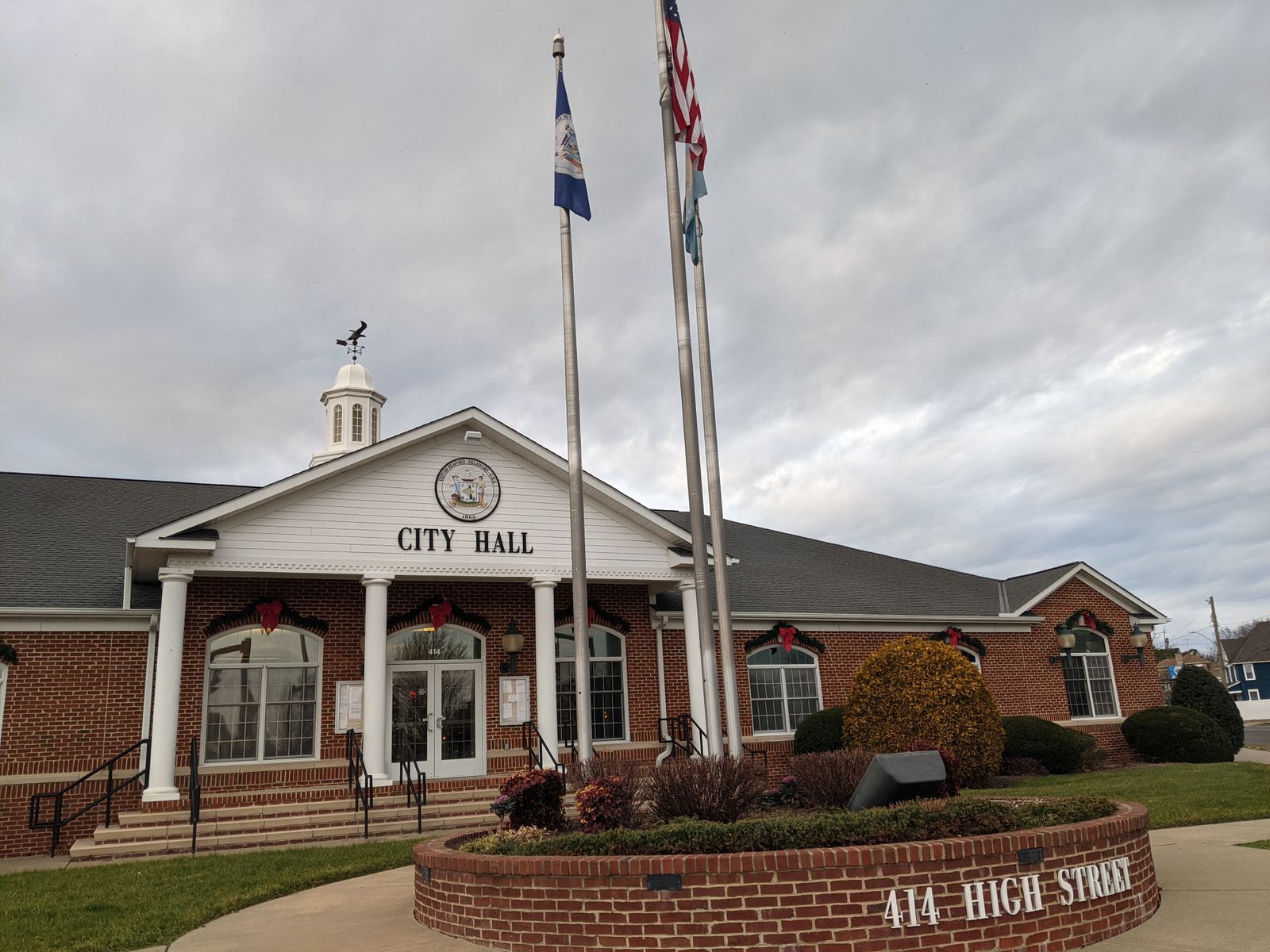What to know as Sussex weighs changes to growth plan for Delmar area

By Tony Russo
Update: Sussex County Council approved this plan change Tuesday.
It was supposed to be a simple process. Robert Horsey, a Laurel developer, wanted to plan a large-scale project for an unincorporated area south of Delmar. The original plan had fallen through during the financial crash of 2009, and Horsey petitioned for a change to the current comprehensive plan that would nearly double the area’s planned density.
His lawyer, David Hutt, contended it was a correction more than a change because what was supposed to be the final draft of the 2018 plan included this higher-density rating. Hutt produced a copy of the plans that designated the land as being zoned for more density than the current comprehensive plan shows.
He said the plan was changed at some point to reflect the lower rather than the higher density designation and that changing it back would be in line with the county’s intent.
The county has made several changes to the current comprehensive plan already, most of which the state didn’t object to. By and large, the state isn’t concerned with housekeeping changes and corrections as long as they’re reasonably close to the original. The extent of the changes in Delmar caught their attention and elicited an almost immediate objection.
As it turned out, it was less simple than a housekeeping ordinance. The state has been doing its planning using the documents the county provided since 2018. Amending them to the proposed degree would require a hearing by the Cabinet Committee for State Planning, according to the state.
“You're not just changing the color on the map,” said David Edgell, director of the Office of State Planning Coordination. “You are enabling the process by which property owners and developers will proceed with the assumption that they can build up to and including the maximum that would be allowable.”
That was where things began to get a little sticky. The maximum allowable number of homes under the plan would have changed from 5,600 to something closer to 11,000 (the precise number won’t be known unless the measure passes and the area's zoning changes). It's a level of development that some County Council members have dismissed as unlikely. The number also shocked some in the community into action. In the days before the Jan. 4 meeting, a small group of residents began collecting signatures on a petition opposing the ordinance.

A map mixup?
In response to resident concerns, council member John Rieley took to social media to reassure his constituents. In a post made on his behalf, Rieley reiterated that this was an attempt to repair an error, possibly made by the state.
“The map was sent to the state after being voted on and approved by Council but apparently had been changed by the time it was returned from the state sign off process,” the post read in part. He invited his constituents to call him if they had any further questions.
Edgell said while the preliminary land use service (PLUS) submitted comments and requested changes at the time, he couldn’t recall whether these specific parcels were among them. PLUS comments on all comprehensive plans as part of its regular function.
He did confirm that there were no changes to the comprehensive plan once it was presented to the state and signed by the governor.
“It could not have changed and did not change,” he said. “We took what they sent us.”
Rieley and the rest of the members of the council declined further comment on the matter, citing a county policy preventing them from commenting on legislation under consideration.
The policy is in place to protect the county from litigation, according to Sussex County Public Information Officer Chip Guy.
“This would be analogous to asking jurors or a judge to comment during a trial,” Guy wrote in an email.
He said the council member's statements, including social posts and invitations for constituents to call him, were for clarification and didn’t constitute commentary so were not in violation of the county’s policy.
By comparison, neighboring Kent County does not have a policy forbidding elected officials from commenting on proposed ordinances, according to county spokesperson Kelly Pitts. Its manual does state that "certain issues should not be discussed with the news media, such as, pending or actual litigation, personnel matters, proposed or pending land acquisition or disaster/state of emergency situations, unless authorized to do so."

Why the map matters
As it turns out, whether the county intended to have made the change is immaterial. The comprehensive plan on file is the one that matters, and changing it over the state’s objections could have real-world consequences for Sussex County residents.
Although county officials question whether 11,000 homes is even a workable number for the area, Edgell said that number is actually on the low side.
“It could be more with conditional uses,” Edgell said. “It's a very large number and it's also about a thousand acres, which is a lot of land, and is that is our concern.”
He said the calculation is based on the county’s plan and the allowable zoning categories associated with the proposed changes.
“It’s just simple math,” Edgell said.“There's actually some zoning out there where they could build some higher density uses, but they want a whole lot more ... Our answer is, ‘No, we prefer you not do that. Let's work with the plan that we've got that we just adopted.’”
If the plan were changed, the areas in question also could be rezoned. The rezoning would have the most significant effect on the allowable population. That is why county officials hold that the figure of 11,000 homes in the proposed change is only hypothetical.
The zoning process, though, is based on consultation with the comprehensive plan. When developers ask for zoning changes, they may cite the comprehensive plan, saying that the county wouldn’t have included uses it didn’t want. At the state level, it is the last place the state can comment before the point of no return.
It isn’t just a guide for county growth, but also a signal to the state about the kind of support needed and expected in a particular region.
In a May 2021 letter to the county, PLUS asked it not to consider increasing the density, citing the drastic change in the character of the plan and the area. If the county disregards the state’s entreaty, there can be consequences.
“The withholding of funding services and infrastructure is meant to be a response to that, and really it's based on fiscal responsibility,” Edgell said. “If a county or municipality does not follow that plan ... we will redirect that funding to places where local governments are following their plans.”
Robert Wheatley, chairman of the Sussex County Planning and Zoning Commission, recognized the infrastructure issues at hand.
“The person I think is at the most risk here is the developer,” Wheatley said. “If the state says, ‘Hey, we’re going to do as little as possible,’ then it’s up to the developer to do the rest.”
Wheatley was heavily involved in producing the current comprehensive plan. He said he doesn’t know how the map ended up being changed, but he’s certain the county planned to increase the density in the Providence Church Road area.
“That area’s always been set to be developed, and it was our intent to be on the plan that way,” he said. “That area was always in our minds to be a developed area.”
Once construction begins and houses start being sold, the tax-base increase could help defray some costs, but the town of Delmar wastewater treatment plant already is struggling to meet capacity. If the state withholds funding based on unapproved comprehensive plan changes, either the county, the developer or both would be on the hook to fund the changes.
Town Manager Sarah Bynum-King said she sent a letter on behalf of the town council asking to be kept appraised of the progress and reiterating to the county that Delmar had neither the EMS nor the water and sewer to accommodate a massive population influx.

Some residents raise concerns
David See couldn’t recall the exact date, but sometime in the early 2000s he and a few of his neighbors attended a developer-sponsored presentation at Abbott’s on Broad Creek in Laurel. They were there to hear about Blackwater Creek, Horsey’s original planned golf community proposed for the Providence Church Road area.
The presenters laid out a detailed plan, talked to the residents about phases of construction, what they would do to preserve the integrity of the neighborhood and how they’d accommodate the roads. Then they took questions.
See remembers being satisfied if not exactly thrilled. The plans at the time included multi-family townhomes that would back up to his property, along with single-family homes.
“They assured us that there was going to be an earthen berm built at the edge of the field so that we wouldn't be peeking in somebody's backyard and vice versa,” he said.
Proximity wasn’t his concern so much as the proposed size in relation to what was already out there.
The Blackwater Creek plans didn’t survive the 2009 financial crash, but it still is allowed under the current comprehensive plan. See expressed disappointment at the difference in approach from the last time.
“As many government agencies do, they met the very bare minimum legal requirements for alerting the public about the meeting, however you look at it,” he said. “I do recall the yellow metal sign with a little white ... notice on it was posted in one of the impacted fields out on the road, this has been months ago. What this has taught me is that when I see one of those, I'm going to take a minute, stop, read it and see what's going on.”
In accordance with county rules, the Dec. 14 hearing had been advertised in the legal notice sections of the Cape Gazette and the News Journal. Keith Steck, president of the Delaware Coalition for Open Government, told the council a change of this magnitude could have rated mail notification in fairness to the residents.
See, resident Carol Hamilton and some others mobilized in time to present their written objections at the Jan. 4 hearing. At the time, the Council was expected to vote on the ordinance. Hamilton presented a petition against the proposal with 529 signatures as well as 23 emails asking the county not to proceed.
Delmar mayor Mike Houlihan attempted to testify. He said he wanted to reiterate that the town didn’t have the infrastructure to accommodate this amount of growth. His objections weren’t allowed because the public hearing was over, although the written comment period was extended.
The council elected to postpone the vote.
Guy said there was no progress in the investigation into when the comprehensive plan was changed.

An ordinance in limbo
Peggy Bowden-White was ambivalent about the proposed changes. She supports growth and said it has been well known that there would be some development in the area before long. What bothered her was the scope, the rush and the lack of communication.
“I sell real estate. I build houses,” she said. “These guys are going to have to explain to the people what their plan is for the area.”
When Bowden-White reached out to Reiley directly for an answer, he asked her to make the social media post explaining his take on the issue.
For people like See and Hamilton, infrastructure is a big concern, especially Providence Church Road itself, which is well-traveled and narrow. The neighborhood already had lobbied the state to bring the speed limit down to 45 mph after a child was hit by a car and killed.
“I've been here since '99 and traffic has vastly increased. People pretty much use this as a shortcut, I'll call it a racetrack, because the 45 mile an hour speed limit might as well be 145,” See said. “It's a shortcut for folks coming from Blades, Laurel, Sharptown and Mardela to get to Salisbury.”
Providence Church eventually becomes Jersey Road as it crosses into Wicomico County and then Lake Street in Salisbury.
The ease of access to Salisbury along Providence Church Road was one of the selling points for both the developer and the Council. Their position is that since Salisbury is an employment center, adding more homes with access to the Providence Church Road shortcut recommends the area as a place for major development.
“My thing is I'm not against development,” See said. “I mean, I know that's going to happen someday. I'm a proponent of planned development, but you've got to have the infrastructure resources in place to support planned development.”
For now, residents wait. There’s a Facebook group in which they report monthly whether the county is preparing to bring the ordinance up for a vote (it is on the agenda for the Tuesday, March 29 meeting, although that doesn't mean a vote will necessarily be taken). Since comments are closed on the matter, they can’t renew their concerns once the county revisits the ordinance. All that’s left for them is to wait.
More stories:



